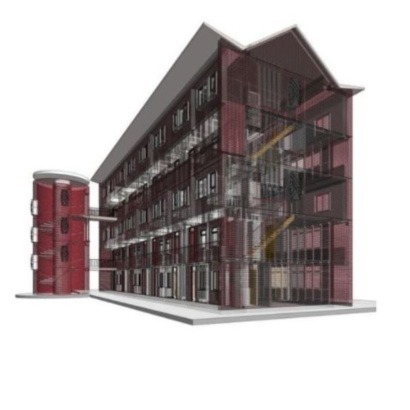Building Performance student work
This section of the TU Dublin School of Architecture, Building and Environment website will feature work by Building Performance students.
- ENEN9103 Sample Project Report 01ENEN9103 Sample Project Report 01
- ENEN9103 Sample Project Report 02ENEN9103 Sample Project Report 02
The Hygrothermal Risk Assessment for Building Performance module enables learners to explore and critique the applied building physics and conventions of hygrothermal calculation and risk evaluation, and their use in creating high quality building fabric performance specifications.
It engages the learner in the analysis and evaluation of the relevant standards and validated software used in the steady state calculation of hygrothermal risk for a limited group of construction components, and the transient numerical simulation of hygrothermal risk for all construction components.
It enables the learner to differentiate and appraise underlying building physics principles and calculation conventions to specify building construction assemblies which satisfy hygrothermal performance requirements and to conclude when specialist guidance is needed.
These are selected posters of the ENEN9105 Hygrothermal Risk Assessment for Building Performance module:
Energy Modelling Tools #1: DEAP
- ENEN9103 Sample Project Report 01ENEN9103 Sample Project Report 01
- ENEN9103 Sample Project Report 02ENEN9103 Sample Project Report 02
Hygrothermal Risk Assessment for Building Performance
The Hygrothermal Risk Assessment for Building Performance module enables learners to explore and critique the applied building physics and conventions of hygrothermal calculation and risk evaluation, and their use in creating high quality building fabric performance specifications.
It engages the learner in the analysis and evaluation of the relevant standards and validated software used in the steady state calculation of hygrothermal risk for a limited group of construction components, and the transient numerical simulation of hygrothermal risk for all construction components.
It enables the learner to differentiate and appraise underlying building physics principles and calculation conventions to specify building construction assemblies which satisfy hygrothermal performance requirements and to conclude when specialist guidance is needed.
These are selected posters of the ENEN9105 Hygrothermal Risk Assessment for Building Performance module:
Multi-Unit Residential Renovation
In the Multi-Unit Residential Renovation project, Students undertook an investigative case study of a deep energy renovation of an existing multi-unit residential development that would achieve appropriate IRL and or EU NZEB standards while also taking account of environmental and cost factors. Students were asked to draw upon existing research and exemplar case studies.
Some example key questions that this case study explored were:
- Complexities and challenges in facade retrofit
- Issues relating to various targets, IRL, EU, Client, Market etc.
- Modularised solutions
- Circularity of renovation unit, block and site solutions
- Environmental impact
- Life cycle cost
These are selected posters of the Multi-Unit Residential Renovation projects:
- 2019 ENEN9202 MURR Poster Gareth McDonnell
- 2019 ENEN9202 MURR Poster Keith Farrell
- 2019 ENEN9204 MURR Poster Conor Glynn
Office
Students were required to develop a design strategy toward achieving nZEB Irl compliance and more advanced EU guidance targets for a simple office building case study, which achieves thermal comfort, while avoiding need for energy system cooling, if possible. As part of the study students undertook a detailed facade study to assess a range of facade solutions and approaches to optimise energy and thermal comfort requirements.
These are selected posters of the Office project:
Building Performance - MSc
Between 2012 and 2017, the Dublin School of Architecture, DIT, Bolton Street hosted a series of ground breaking conferences exploring the technological and educational implications of the Nearly Zero Energy Building or NZEB standard.
You can view samples of the NZEB deep energy retrofit project work on the Energy Retrofit Technology conference webpage. Projects include the following:
Multi-unit residential retrofit
- Gullwing Retrofit 2012
- Flattop Retrofit 2013
- 4-in-a-Block Retrofit (BRE Scotland) 2014
- The Crumlin Cottage 2015
- The 30kWh House 2017
School Retrofit
- The Boyd Barret generic school 2014
- The Department of Education generic school 2015
Office Retrofit
- The Dublin Airport Authority Office 2015
- Liberty Hall 2016

Gullwing Retofit 2012
